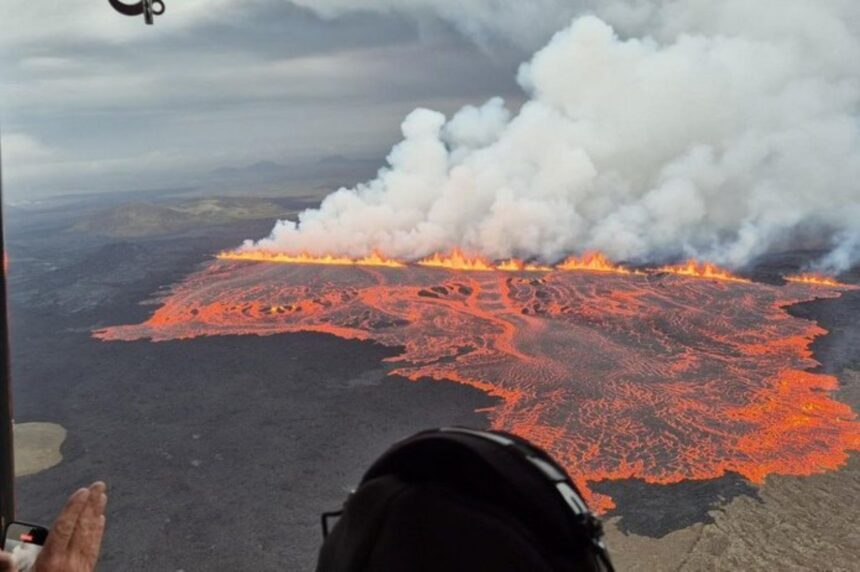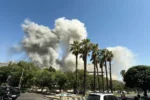The Sundhnukur volcano on Iceland’s Reykjanes Peninsula, once dormant for centuries, erupted on Wednesday for the twelfth time in four years, leading to precautionary evacuations of nearby resort towns.
The volcano, located on the southwestern tip of Iceland, began spewing smoke and volcanic lava following an “intense earthquake swarm” detected in the morning hours. This latest activity follows a period of centuries of silence until 2021, marking a significant reawakening of the region’s volcanic systems.
Evacuations and Minimal Infrastructure Threat
As a safety precaution, tourists, families, and hotel guests were evacuated from Grindavík, the popular Blue Lagoon resort, and other local areas. However, despite the eruption, no significant flight disruptions were reported at the nearby Keflavík International Airport.
According to Iceland’s meteorological office, the molten magma created a fissure in the Earth’s crust approximately 700 to 1,000 meters (2,296 to 3,280 feet) long. Early GPS and deformation data suggest this is a relatively minor eruption compared to previous events, with lava flows appearing concentrated and currently not threatening any infrastructure. A smaller fissure, estimated to be about 500 meters (1,640 feet) long, also opened west of Fagradalsfjall.
Ongoing Volcanic Activity and Gas Pollution
Authorities in the municipality of Reykjanesbær reported high levels of gas pollution carried by the wind, though toxicity reportedly decreased later.
The Reykjanes Peninsula has experienced multiple volcanic eruptions since 2020, with continuous activity throughout 2024. The town of Grindavík, once home to around 4,000 residents, was largely evacuated late last year due to ongoing volcanic risk and has remained a “ghost town” since. Icelandic authorities have repeatedly warned tourists to stay away from the affected area.
The Sundhnukur volcano was notably active as recently as early February and May of last year, underscoring the dynamic and unpredictable nature of the region’s geology. Experts warn that volcanic activity in the Reykjanes system could persist for decades, or even centuries, highlighting the long-term challenges for residents and infrastructure in the area.







